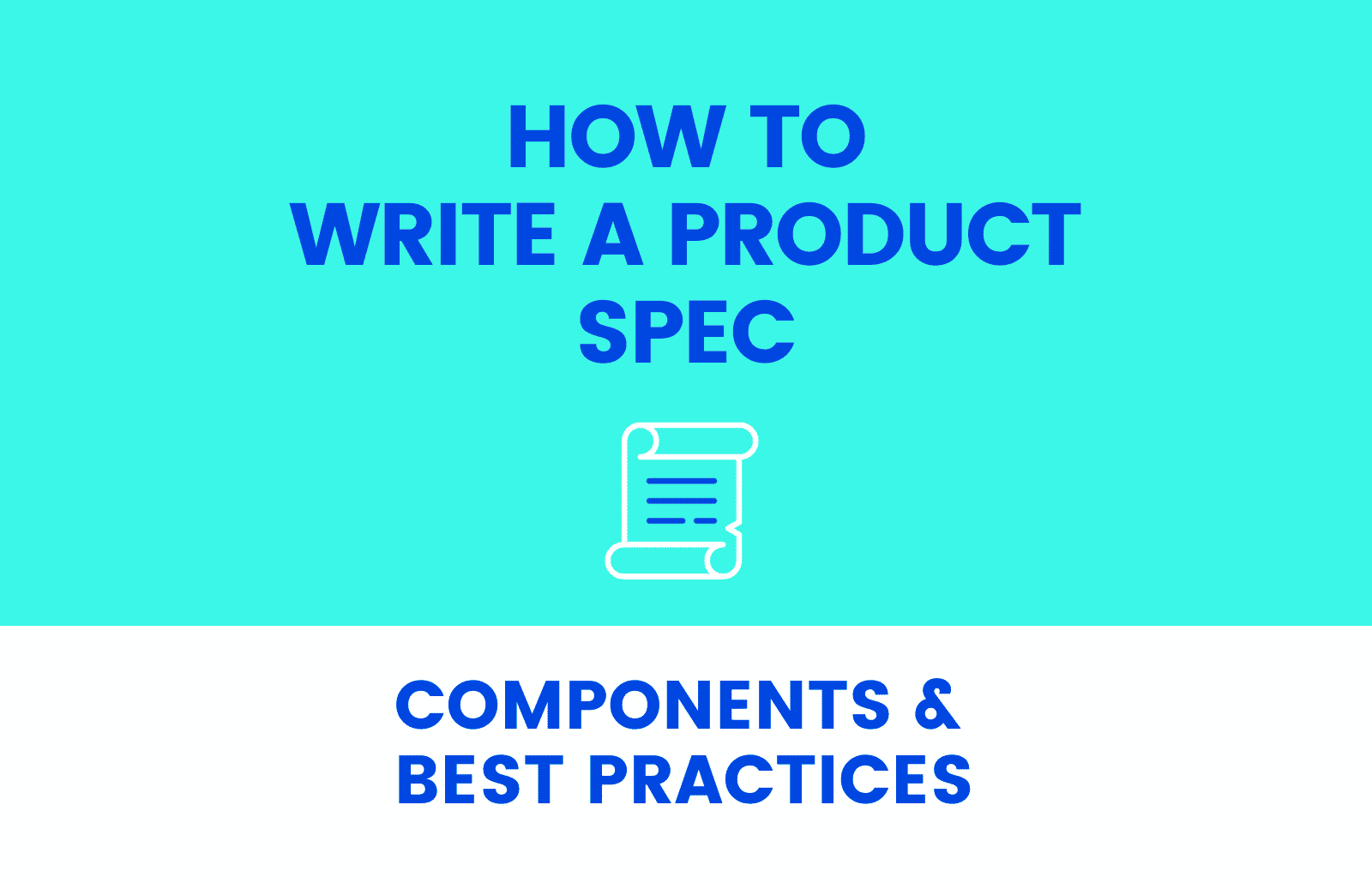When the what and the why of a goal is understood, much better and targeted results can be obtained. This exercise applies also to writing Product Specifications. So let’s dive into what it is used for and why it is important.
What is a Product Spec?
In Product management, a Product Specification (also known as Product specs or Specification) is a document that contains crucial aspects of the new product to be designed and built: what is, what is going to look like, and what are going to be its main functionalities
In other words, it describes what the product will be and should give answers to what the product is expected to accomplish (outcome), how it is going to accomplish it (solution) and how success will be measured (adjustments). And to help to visualise the solution, it can be accompanied by Design Wireframes.
Using product specs will allow the product development team to understand what they have to design and build, and also help the product and design teams to discover a feasible solution. Often it takes a few reviews between product, design and development till the product spec is finalised.
Depending on the organisation and the different roles the company has, the person who writes the product specification can vary, but normally is the Product Manager who writes the product specification sheet.
Why is it important to have good product specs
Having a document that contains the most important requirements and functions that will shape the product is key when developing a new product. This document should refer to specific goals, outline the fitting product, and give insights about the expected outcomes.
Good product specifications should be concise and written in a clear and readable language that anyone in the team (whether it be team members from the design, product, or development departments) can understand.
There is value for product managers to be involved in writing the spec sheet and creating it collaboratively with the team. This would help the team have a better understanding of the exact goals and take responsibility for what is decided together.Including precise information will help to avoid confusion and miscommunication between all the teams involved, and will also help to speed up the product development process.
What is included in a Product Specification sheet
There are a number of elements that product specification documents should contain. Of course,the content of Product Specs may vary largely depending on the outcomes and goals to achieve, and even on team or organisation needs. Nevertheless, let’s dive into the key section that all Product Specs should have:
Product Summary
This is the general description of the product. This section includes an outline of the product idea and why you are creating the product (the problem you are trying to solve), what is the goal in developing it, the key features that define the product, what the product will look like as well as the expected time to develop it.
Business Case
The business case summarises the benefits the product will bring to the company, as well as information related to budget and resources needed to build the product. It should provide validity for the ROI of the product and allow stakeholders to understand what that may look like.
User Stories
User stories are non-technical, short descriptions of features that explain what the end user wants to achieve and obtain some value by using the product. Taking into consideration the ambiguous nature of the user stories, writing acceptance criteria for each of them also helps developers to understand when a user story has been satisfied.
User Personas
User personas show the behaviour of the end user which represent the needs of a larger group of users. Within the Product Specification, user personas describe who the product is being created for. Their needs, goals and what they are trying to achieve are collected in this document, so team members involved in the project have a clear picture of who the end user is.
Product Design
This is a visual representation of how the product will look like. Including a drawing with technical details is expected in this section. It does not need to show the final version, and it can be amended during the product development process, but at least it will serve as a reference and starting point to the team.
Functional Spec
This last section covers the appearance and competences of the product, as well as a clear workflow of how the users interact with it. This is considered as a reference for the product development team.
As a summary to keep in mind, a Product Specification has done its job when anyone that has gone through the documentation can answer what are we building and why and what should the product achieve.
Best practices to make a great Product Spec
Define the problem
Why are we building the product? What problem are we trying to solve? We need to make sure we are addressing customer and business needs when building a new product.
Customer feedback
Understand customer input and listening to what customers say about how the product can benefit them, will give insights into what the customers love and don´t like about the product,
how to meet their needs and what to improve and how.
Involve different teams in the discussion
Getting the teams involved in the new product development in the discussions can be also very beneficial. Having different points of view from a multidisciplinary audience will extend our understanding to what commercial, legal, marketing and sales teams need and want, providing invaluable feedback that support the customer feedback.
User testing
Once the requirements are defined and agreed, the next step would be to create a prototype keeping in mind the problem identified, the outcome and user personas. The best way to understand whether our product works is to allow users to play around with the product, test all the possible scenarios they may face on a daily basis and provide feedback based on their testing.
Final Thoughts
In conclusion, producing a Product Spec is key when developing a new product. Depending on the specific needs and the nature of the product, your Product Spec can take different shapes and forms. If you spend enough time defining the problem, involving the stakeholders correctly, and getting input from everyone, you should be able to write a solid product specification document, which will be the guideline and structure that will bring your product to life.
—
The Author:



